


History and Facts
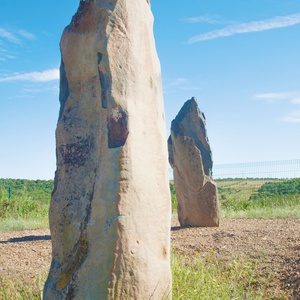
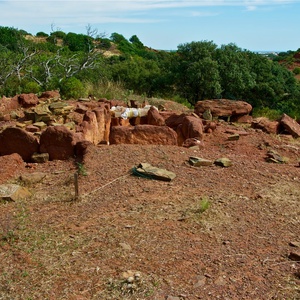

The human presence in the territory, that today constitutes the municipality of Alcoutim, can go back to the Middle Paleolithic, as it was recently discovered archaeological remains of this period, in Pereiro parish. But it was from the Neolithic period (5000 BC to 3000 BC) that the megaliths builders populations settled all over the territory. Several examples of megalithic monuments scattered throughout the municipality, as dolmens, menhirs, tholos or megalithic cists are testimonies of this presence and definitely worth a visit.
Many are also the elements which certify the continuity of human communities in the periods that follow. The necropolis of cists of the Bronze and Iron Age confirm it.
Also the prehistoric tomb of St. Rita (Vila Nova de Cacela) is one of the last megalithic testimonies best preserved in the region. Recent archaeological work in 2007 and 2008 allowed the characterization of the architectural structure and a first approach to chronology, characterization of the landscape, study of social structure and funerary ritual used by the communities who built and used this prehistoric tomb about 4500 years.
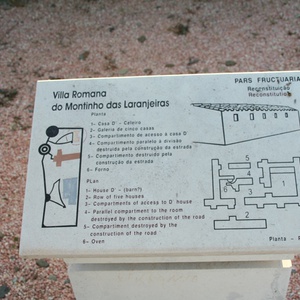
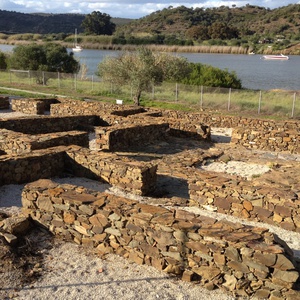

The Romans arrived in the territory at the beginning of century II BC, already exploring the ore that existed in some parts of the region. In this period there are many traces that indicate the existence of organized communities in housing units or households, particularly in coastal areas, which concentrate the best agricultural land. Here, the great river of the south - the Guadiana - exercised a strong attraction as a way of penetration of trade routes that linked this territory through the Mediterranean.
Even today we can find remains of Roman villae along the Guadiana River - is the case of the Roman Villa of Montinho das Laranjeiras, today transformed into an archaeological station, fully prepared to receive visitors. Located next to the riverside village of Montinho das Laranjeiras, about eight kilometers south from Alcoutim. There were also found remains of structures used in water supply, such as aqueducts and tanks which allowed to irrigate the fields and crops, such as Alamo Dam.
During the Roman occupation, Baesuris, today Castro Marim, maintained its importance as a major trade interposed of products from the Mediterranean in the region. Located in an insula, rising and dominated the Guadiana estuary, it controlled the shipping routes in the river till the decline of the Roman Empire, a situation that has already occurred since the arrival of the Phoeniciansin the territory in the IX century BC.
Also in Cacela traces of Roman era are numerous and extremely important, having been found tanks of fish salting, potteries, among others.
After the Romans, other people arrived in the territory, including the Alans, the Vandals and the Visigoths.
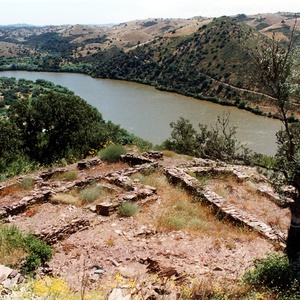
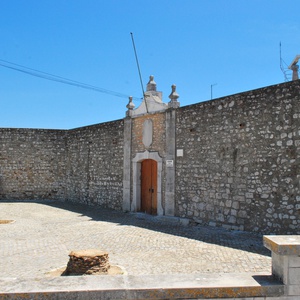

In the early XVIII century, the region lived il the Moors Domain who fortified with some strategic points. This is the case of Alcoutim, where today there are remnants of the fortification built in the hill of Santa Barbara, between the XVIII and IX centuries, whose remains are musealized and can be visited at present dau, having the designation of "Old Alcoutim Castle". This implantation would have had its origin in a strategic concern of Guadiana River area and control the mining trade, primarily copper from local outcrops. The five hundred years of Islamic dominance in Alcoutim, as well as the abundant toponymy,lit´s identified in hundred of places/sites so far, what show us the strong Moors presence in the territory.
Another of the strategic locations was Cacela. With the centralization policy of Abd al-Rahman III caliph (912-961), this village takes on a clearly military nature, and was built the Hisn Cacela in the X century. Hisn was an important military defense structure, built on the routes land and sea circuits between the Atlantic Ocean and the Mediterranean sea. This fortification defended the coastline and protected the population. There are several marks that the people left in the region with the introduction of dried fruit, citrus and spices in the kitchen area and also in terms of vocabulary.
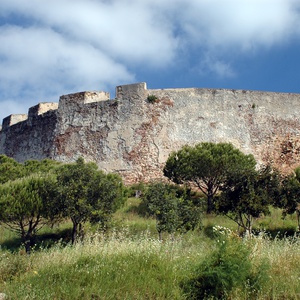
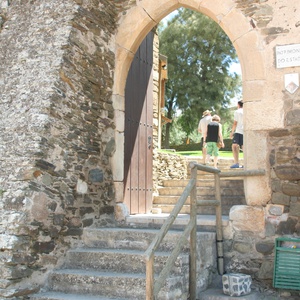

In the reign of King Sancho II the villages of Alcoutim and Castro Marim were taken from the Moors in 1240 and in 1242 respectively, and are incorporated into the Portuguese kingdom.
With the advancement of the Christian Reconquest (which occurred between 1238, with the conquer of Mértola, and the taking of Ayamonte in 1239), there appeared to be a certain decrease in the rural population, although not all places have been permanently abandoned. After the final reconquest of the Algarve from the Moors, and the consolidation of Portuguese and Spanish borders, began the process of agricultural colonization and fortification of the border squares.
D. Afonso III orders in 1272 «póvoa» in Castro Marim, a real measure for the repopulation of the village that militarily took a valuable strategic position on the border between the two kingdoms. In 1277 grants Castro Marim a charter with great privileges to attract people more easily to that area, raising in 1274, on the pre-existing fortifications, the castle quadrangular structure. Most of the population lived of the land but the strategic position of Castro Marim withdrawing from the sea and the river the fishing and other important products for the economy of the region, which were easily negotiated with the Kingdom of Algarve and Andalusia nearby.
D.Dinis gives charter to Alcoutim in 1304, ordering to build the castle walls, giving the village the Military Order de St.Tiago. This castle will have to be reformed, later, March 20, 1520, by D. Manuel I.
Also with D.Dinis Castro Marim has been recognized by it´s geographical location importance. The king donates the village and its fortress to the newly created Order of Christ, where he could make war, by sea and land, to North Africa Moors and the Castilians. Years later, in 1356, the Order of Christ was transferred to Tomar. This transfer has become a prestige progressive signal of the village where, despite its borderland position, the population left the village.
In 1371 it was signed the Treaty of Alcoutim Peace that ended the War of the Castilian Succession between the king of Portugal, D.Fernando I, and the king of Castile D.Henrique II.



In the XV century, with the increase in overseas campaigns, the region, especially Castro Marim, gained new impetus, becoming this village a strategic point for overseas conquest. Given its proximity to Morocco, Castro Marim now has a key role in the fight against Muslim piracy, becoming the main square of the Algarve war after the restoration work that King Manuel I ordered to the castle in 1509. So , the village becomes an important point of safety, fishing and commercial port.
Alcoutim in the late XV century, becomes a county in favor of Marquises of Vila Real. The Meneses family kept this county until the XVII century, when their assets were integrated in the House of Infantado (1654).
In the meanwhile, with the Restoration War in the XVII century, and given the proximity of the territory with Spain, Alcoutim was the scene of military skirmishes, specially in 1642 with the artillery duel fought with S. Lucar del Guadiana. In 1661 Portugal won the castle of San Lucar and 29 August 1666 the Portuguese militarily forces occupied Sanlucar village for some time.
D. João IV (1640 - 1656) have decided to restore the castle of Castro Marim and make new works of fortification, building the Fort St. Sebastian in Cerro do Cabeço and Ravelin Sto. Antonio at CerroRocha of Zambujal, which by its advance on other fortifications was designed to control the crossing and navigation on the Guadiana. Castro Marim became after this conflict, the main stronghold of the Algarve region and the most important south of Elvas.

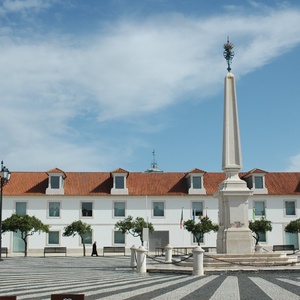

The earthquake of November 1, 1755 reached all the south of Portugal, including the Algarve, and the destruction was widespread. Modern geologists estimate that the Earthquake of 1755 reached 9 on the Richter scale.
The Cacela village was badly damaged, having also been built in the century. XVIII, when it appeared the current fortress. The population was gradually leaving the village and moving to the royasl road. About 1km away, on the road to Real de Santo António Vila and the current railway line, grew Vila Nova de Cacela or Cacela as now called, calling itself the ancient village of Cacela, by the sea, Cacela-a-Velha.
Castro Marim also suffered great shock and was destroyed much of its architectural heritage and therefore no longer used the accommodation units inside the medieval wall. The village grew outside the walls without, however, able to recover the importance of past centuries, aggravated by the birth of Vila Real de Santo António that along with the silting of estuaries, caused his declination.
Vila Real de Santo António appeared in the reign of King José I (1750 - 1777), when the Prime Minister Marquis of Pombal promotes, in the 3rd quarter of the century XVIII, a genuine reform in the Algarve economy. He quickly realized they would have to be taken urgent measures in the region to prevent the Spaniards to take over the economy, and, on the other, to take advantage of the abundant fish resources, especially sardines, provided by Monte Gordo Bay View.
In fact, at the mouth of the Guadiana River, was located Ayamonte, a town of great strategic importance at the time, and Castro Marim, on the Portuguese side. Although on the Portuguese side existed since the reign of King Manuel I, in particular since 1513, a small village of fishermen, St. António de Arenilha, which, for some years to this part, was virtually abandoned. About three kilometers to the west was located Monte Gordo, at that time a village exclusively made up fishermen huts.
It was then that the Marquis decided to build a village to translate the strategic affirmation of Portuguese sovereignty at the end of Levante Algarve, in order to control trade on the border and developing fisheries, that later would arise the canning industry. Vila Real de Santo António would eventually be built in less than two years, on the beach at the mouth of the Guadiana, and founded in 1774. The geometric layout of the Pombaline urbanism that gave birth to the city now constitutes a unique example of the Enlightenment in Portugal.
The new village became to depend on tuna because of its geographical location and its port, which could receive deeper draft boats, it began to attract a considerable fleet of fishing boats and transport. Several sardines and tuna canneries factories were installed later in Vila Real de Santo António.
As for neighboring villages, they gave way, obviously, before the will of the Marquis. The village of Cacela loses the county title and becomes a parish of the new urban center; Castro Marim is deprived of its Customs House, which is then transferred to the the Pombaline village.
With the death of the Marquis of Pombal in 1782, Vila Real de Santo António loses the initial impulse.
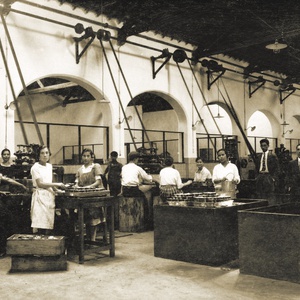
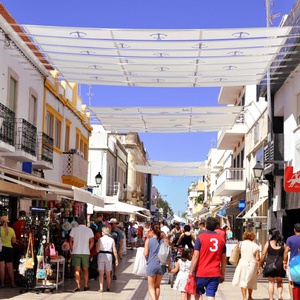

With the liberal revolution, conflicts between liberals and miguelistas (D. Miguel supporters) spill over to the territory, registering the recent conflicts in Alcoutim around 1833/1834, in which the two factions fought for the the hold of the Guadiana River. It is said that the famous «Remexido» burned some village offices. At this point Alcoutim definitely loses its strategic military position and it's incorporated, fully or partially, by neighboring municipalities. After the liberal revolution, the abolition of feudal rights, including the Religious Orders, and specific laws on wheat production, large areas started to dedicate to the culture of cereals, such as wheat and rye.
From the second half of the XIX century, and mainly from the last quarter, there has, in a way, a new impetus to economic development of Vila Real de Santo António. The presence of sardines and tuna in the Algarve coastal waters turned the village into a major canning and fishing center. The industry of canned fish marked the village economy.
The 50s and 60s of the twentieth century were years of great economic development in Vila Real de Santo António, not only by the extent of the industries of canned tuna and sardines, but mainly by large anchovy catches in Morocco. After changing the anchovy catch areas and sardines, started in the second half of the 60s, a major crisis in fisheries and industry of canned fish. The crisis of fisheries and canning industry coincided with the expansion of tourism.